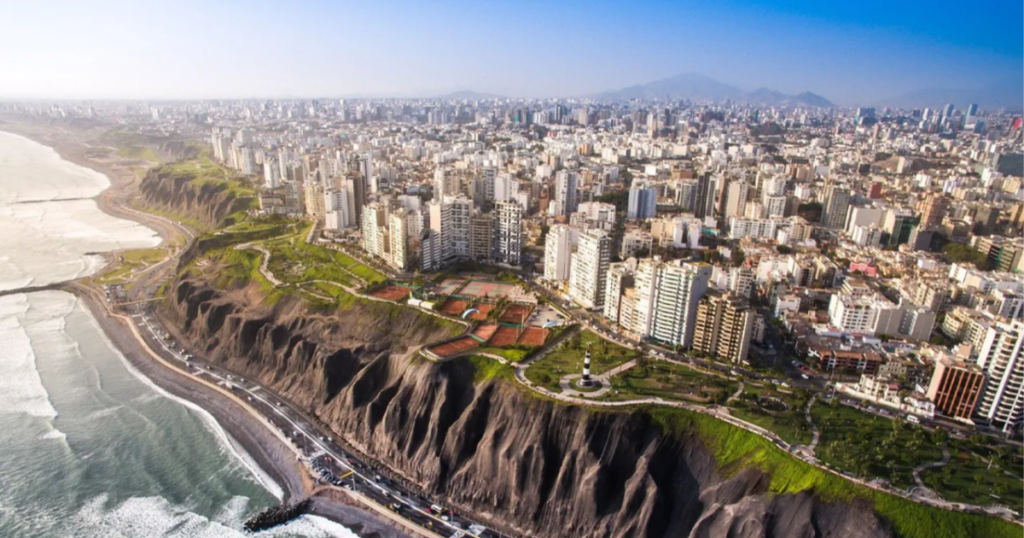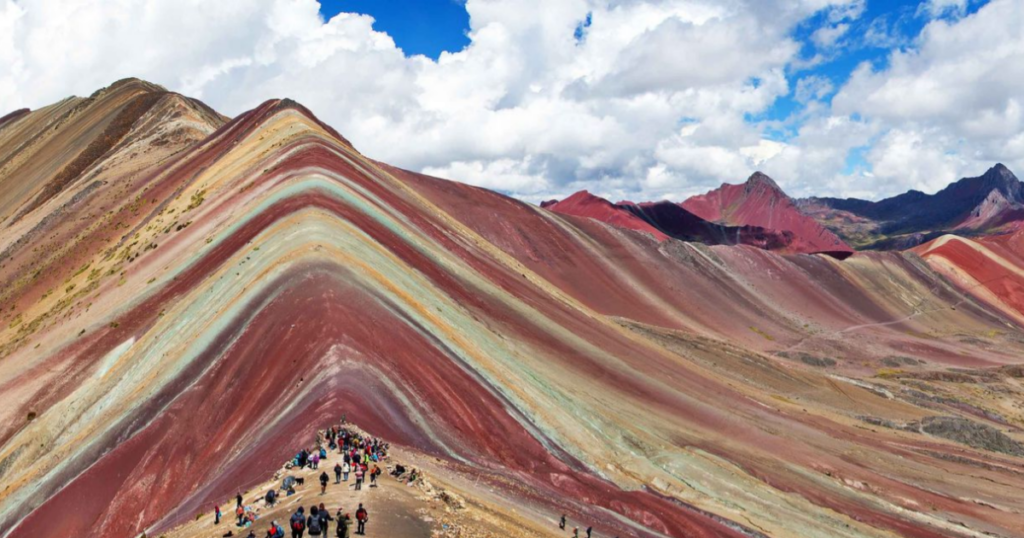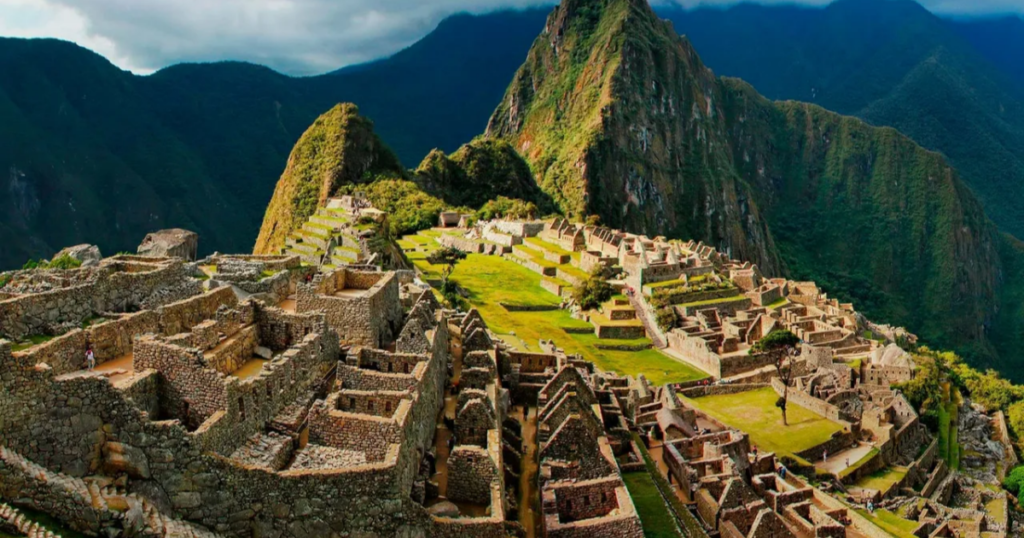Peru: Exploring the Wonders of the Land of the Incas
Peru is a country that is steeped in history, rich in culture, and filled with breathtaking landscapes and landmarks. From the majestic ruins of Machu Picchu to the bustling streets of Lima, there is no shortage of amazing sights to see and experiences to have in this fascinating country. In this article, we will take a journey through Peru, exploring its rich history, unique culture and traditions, and highlighting some of the top places and landmarks that you simply must visit on your next trip to this incredible land of the Incas. So pack your bags, immerse yourself in the local culture, and get ready to discover the wonders of Peru!

Also Read 15 Landmarks To Visit Before You Turn 65
History Of Peru
Peru is a country located in South America with a rich and complex history dating back to ancient times. The earliest known civilization in Peru was the Norte Chico civilization, which emerged around 3500 BCE and developed impressive architectural and agricultural techniques.
However, the most well-known and significant ancient civilization in Peru is the Inca Empire, which flourished from the 13th to the 16th century. The Incas established a vast empire that extended throughout much of South America, with their capital in Cusco. They were known for their advanced engineering and architectural feats, including Machu Picchu and a vast network of roads and bridges. However, the Inca Empire was conquered by Spanish conquistadors led by Francisco Pizarro in 1533.
Under Spanish rule, Peru became a major source of silver and other valuable resources for the Spanish Empire. The Spanish also brought with them diseases that devastated the indigenous populations and imposed their culture and religion on the native peoples.
Peru declared independence from Spain in 1821, led by General José de San Martín and Simón Bolívar. The newly independent country struggled with political instability and economic difficulties throughout the 19th century. The War of the Pacific (1879-1883), a conflict between Peru, Bolivia, and Chile, further weakened Peru’s economy and political power.
In the early 20th century, Peru experienced periods of economic growth and political stability, particularly under the presidency of Augusto B. Leguía (1908-1930). However, the country also experienced political violence and upheaval, including the Shining Path insurgency that began in the 1980s and lasted for over a decade.
In recent years, Peru has made significant strides towards democracy and economic development. The country has seen steady economic growth and poverty reduction, and has become a major player in the region’s economy. However, it continues to face challenges such as corruption and inequality, and its history and diverse cultural heritage continue to shape its present and future.

Culture And Tradition Of Peru
Peru’s culture and traditions are a rich and diverse blend of indigenous, Spanish, African, and other influences.
One of the most significant aspects of Peruvian culture is its cuisine, which is considered one of the most diverse and delicious in the world. Peruvian cuisine features a wide range of ingredients and flavors, including seafood, potatoes, corn, and a variety of spices and herbs. Some of the most popular Peruvian dishes include ceviche, lomo saltado, and causa.
Music and dance are also integral parts of Peruvian culture, with a wide range of traditional styles and rhythms found throughout the country. Some of the most famous traditional dances include the marinera, huayno, and saya. Peruvian folk music is characterized by the use of indigenous instruments such as the quena and charango.
Another important aspect of Peruvian culture is its rich artistic traditions, including pottery, textiles, and weaving. The ancient Inca civilization left a lasting legacy in the form of impressive architectural feats such as Machu Picchu and the city of Cusco.
Peruvians also celebrate a number of important festivals and holidays throughout the year, many of which blend indigenous and Catholic traditions. One of the most famous festivals is Inti Raymi, the Inca festival of the sun, which is celebrated in Cusco every June. Other important festivals include Carnaval, Semana Santa (Easter), and the Day of the Dead.
Despite centuries of colonization and cultural exchange, many indigenous traditions and languages have survived in Peru. The Quechua and Aymara languages are still spoken by millions of Peruvians, and indigenous communities continue to practice their traditional customs and beliefs. This rich cultural diversity has contributed to the unique and vibrant character of Peru’s culture and traditions.
Table of Contents

Top Places You Would Want To Visit When In Peru
Peru is a country with a rich cultural and historical heritage, and there are many places and landmarks that are worth visiting. Here are some of the top places and landmarks to see in Peru:
Also Read 15 Landmarks To Visit Before You Turn 65
1) Machu Picchu – This ancient Inca citadel is one of the most famous landmarks in Peru and is considered one of the New Seven Wonders of the World. The site is perched on a mountain ridge and offers breathtaking views of the surrounding landscape.
2) Cusco – This city was the capital of the Inca Empire and is home to a number of impressive historical sites, including the Temple of the Sun and the Cathedral of Santo Domingo.
3) Lake Titicaca – This is the highest navigable lake in the world and is home to a number of indigenous communities who continue to practice their traditional way of life.
4) Nazca Lines – These mysterious geoglyphs etched into the desert floor are thought to date back to between 500 BCE and 500 CE and feature various animal and geometric shapes.
5) Colca Canyon – This canyon is one of the deepest in the world and is home to the Andean condor, which can be seen soaring overhead.
6) Huascarán National Park – This park is home to some of the highest peaks in the Andes, including Huascarán, the highest mountain in Peru.
7) Arequipa – This colonial-era city is known for its white-washed buildings made from volcanic stone, and is home to a number of impressive historical sites, including the Santa Catalina Monastery.
8) Paracas National Reserve – This reserve is home to a diverse array of wildlife, including sea lions, penguins, and flamingos, and offers stunning views of the desert landscape and Pacific Ocean.
9) Chan Chan – This ancient city was once the capital of the Chimú civilization and features impressive adobe structures and intricate wall carvings.
10) The Sacred Valley – This picturesque valley is home to a number of Inca ruins and traditional Andean villages, and is a popular destination for hiking and outdoor activities.
Peru is a fascinating and diverse country with a rich cultural and historical heritage. Its cuisine, music, and dance are among the most diverse and vibrant in the world, and its natural beauty, including the Andes Mountains and the Amazon rainforest, is awe-inspiring. Despite its challenges, including poverty and political instability, Peru remains a vibrant and welcoming country that offers visitors a wealth of opportunities for exploration and adventure.
Do Let Us Know What You think About Our Article On Peru. Was it Helpful And Interesting.
Follow us on Youtube
Follow us on Facebook
Follow us on Twitter
Follow us on Instagram

